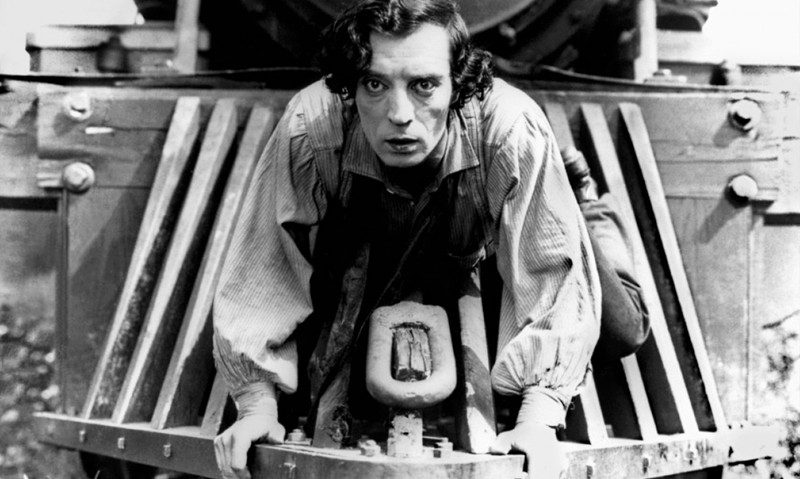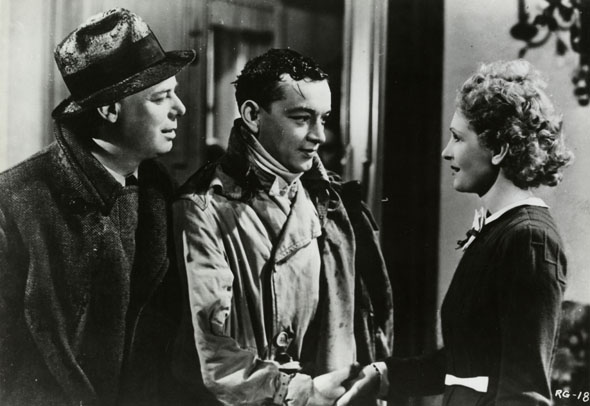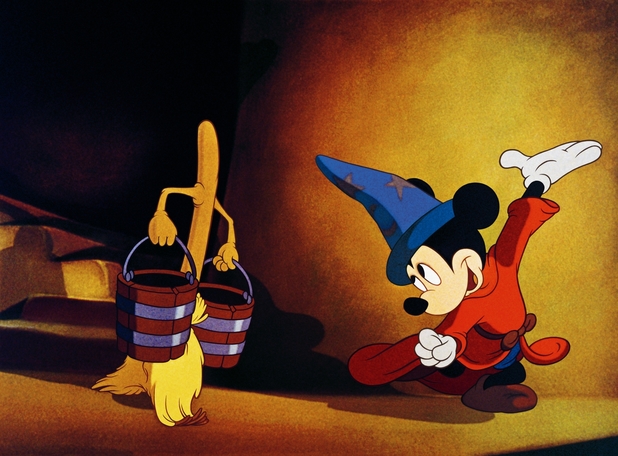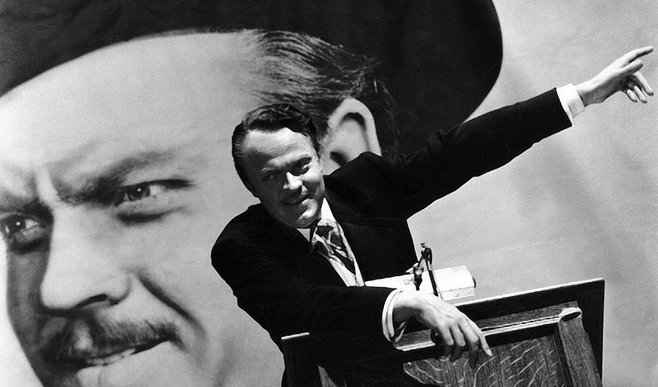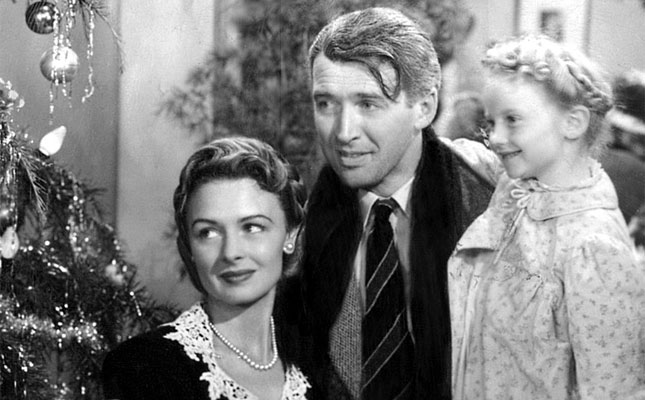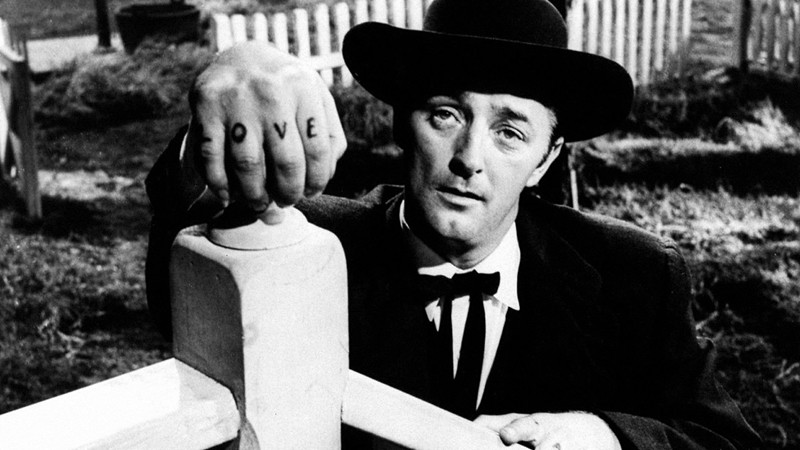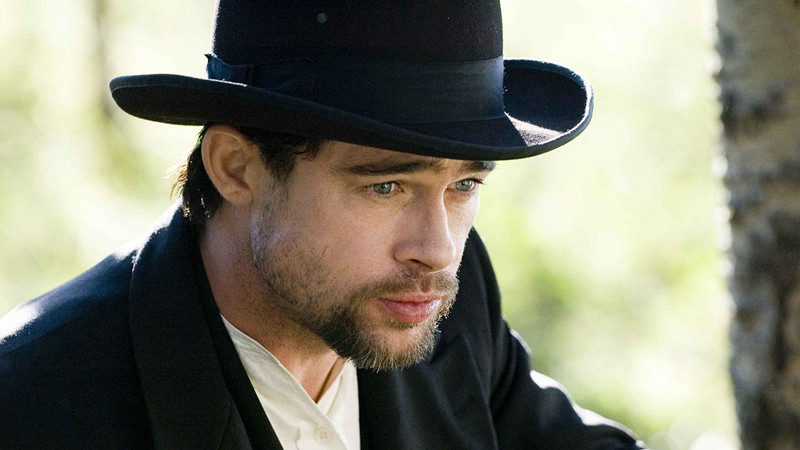
Whether it’s due to a particular film not striking a chord with audiences upon release or the theme being misunderstood, it is not uncommon for masterpieces to sometimes slip under the radar. Often, these treasures patiently wait to resurface through DVD release or television, gaining a slow-burn cult following. For a cinephile, there are few things more exciting than rediscovering these misunderstood masterpieces.
Below are twenty films that waited for us to catch up to them and now that we have, their brilliance only gets better with each viewing, establishing them as some of the finest motion pictures ever made.
1. The General (1926)
During the silent era, it was hard-pressed to find a more iconic director/writer/actor than Charlie Chaplin. His mass appeal made him an instant success. However, in subsequent years the re-discovery of Buster Keaton has led many critics to say he rivaled Chaplin’s genius and, in some respects, surpassed the Little Tramp.
Perhaps because of Keaton’s lack of sentimentality, his films have arguably aged better; they are extremely witty and half the time one can barely believe one’s eyes. How did Keaton manage to achieve what he did? From the special effects to the stunt work, they are visually and conceptually jaw-dropping.
The General is widely regarded as his masterpiece and the way he uses actual steam-engine trains, like toys on a child’s play-set, is eye-popping. Despite the film’s epic proportions, Keaton never loses sight of the central love story. The genius of the film is that he makes it all seem so easy. In an era where we have computer wizards who can create anything via CGI, The General is a truly astonishing “for real” ride.
No wonder it has appeared twice on Sight and Sound’s prestigious poll as one of the top ten greatest films of all time. It took over forty years for the film to finally receive its due recognition.
2. The Rules of the Game (1939)
Upon its release in 1939, the movie was panned, hated, and ultimately banned. Despite director Jean Renoir’s title card at the beginning of the film stating that this was “not social commentary,” the film was clearly upsetting a large group of people who felt that it was attacking the French Bourgeoisie.
Whether or not Renoir (son of the legendary painter) intended this social statement on class, it’s clear that he’s exploring French society’ “rules of the game” regarding love and relationships. Also controversial was the animal hunting sequence. Considering, it was released at the brink of WWII, many have interpreted this scene as a no-holds barred metaphor of the brutality Europe was about to experience. The irony and hypocrisy of this scene did not go unnoticed with French society at that time, but rather than applaud this critique, audiences damned the film.
It would take many more years and the end of the war for audiences to begin to look at the film again with objectivity and a better perspective. Jean Renoir created a complex, politically savvy, highly entertaining and technically brilliant film. All the while exploring the possibilities of what cinema could do. It has appeared on Sight and Sound’s top ten greatest films list a total of seven times (usually right near the top, often ranking number two behind Citizen Kane).
Two years before Orson Welles made film history, Renoir also broke new ground with filming multiple characters in a room, tracking the camera around them – following them from room to room – and capturing an almost ballet-like movement throughout the film. The fast-paced nature of the drama is another reason the film still feels fresh today. The characters are honest, hilarious and Renoir manages to express profound statements on French society effortlessly.
Its intelligence and sophistication was so far ahead of its time that it took us almost two decades to catch up with it. Fittingly, it was the French Nouvelle Vague who began to champion the film which led to the lead to the New Wave movement that revolutionized cinema and ushered in the modern era. Renoir undoubtedly had a pivotal role in that.
3. Fantasia (1940)
During the golden age of animation, Walt Disney the man was quite the maverick. He pushed his creative team, and what animation could be, to the limit. During the late 30’s and early 40’s they created a handful of masterpieces: Snow White, Pinocchio, Dumbo and Bambi. But the closest Disney has ever come to making an “art house” film would have to be Fantasia.
This was a daring and challenging move for Disney. No one had attempted anything quite like it. Beginning with famous classical pieces and then animating images to accompany the music; essentially, this was the birth of the music video. One of the more ambitious segments involved dinosaurs.
First of all, using a modern composer’s tumultuous piece, Stravinsky’s Rite of Spring was a bold move. Second, to try and accurately animate dinosaurs, based on the scientific research of the time proved to be a daunting challenge. As a result, history classes in grade schools around the world would show children this sequence for educational purposes. Believe it or not, this was the first time we saw dinosaurs on screen in color!
Disney also pioneered quad sound in Fantasia. In select theaters, the film would be screened with surround sound speakers set up in various auditoriums – a concept years ahead of its time. Disney wanted to create a symphonic experience by bringing classical music to younger generations. Most risky of all was the final segment by Mussorgsky – Night on Bald Mountain. A sequence that traumatized a generation of children. Its archetypal monstrous villain became a template for how to properly animate a demon.
Famous writers like Stephen King and Clive Barker have both cited this sequence as being a primary influence for getting interested in horror at a young age. It’s a frightening, surreal and gutsy finale for any animation, let alone a Disney film.
It is also important to place the film in context of its time. Consider for a moment, when the film was released, 1940, right when WWII broke out. Millions of children around the world were confronted with unspeakable horrors. For children, Fantasia’s Night on Bald Mountain reflected the reality that there are some scary things out there (especially at night – a cautionary tale for children to stay in their beds) but ultimately the “evil” cannot last.
The coming of dawn will chase all the evil creatures go away, and thus, the horrors of WWII will be triumphed over one day. There will be an end to the tragedy. This makes Fantasia an important allegory for children to cope with the insanity happening around them during the war years.
Not surprisingly, however, there was a backlash from angry parents objecting to the “satanic” imagery that Disney produced (after all, there were images of naked breasts amidst the flames). Disney’s dream of Fantasia being an ongoing series crumbled due to its initial shunning from majority of audiences.
It wouldn’t be until the psychedelic 60’s when the film would be re-discovered, and truly appreciated for how ground-breaking it really is. At a time when Disney has morphed into such a massive corporation it’s easy to forget it pioneered cutting edge animation that pushed the envelope. Is it any wonder that the AFI placed Fantasia on its top 100 greatest films list?
4. Citizen Kane (1941)
What more can be said about Citizen Kane? No other movie in history has been labeled the “greatest film ever made” as many times as Orson Welles’ debut. As a result, the words “overrated” spring up from time to time. But it’s worth noting that Citizen Kane was not always so highly respected. Initially upon its release in 1941, the film was panned by many critics and was generally considered a flop. However, it’s the test of time that assures greatness, and it took over twenty years for the film to cement its esteemed place in cinema.
Today many claim that the only reason it’s so often cited as the greatest film ever made is because it was so original and “ahead of its time.” But let’s study Citizen Kane with 21st century eyes because, in some respects, this film is just as relevant now as ever. True, technically it was ridiculously ground-breaking, but its story and theme are timeless and universal. “Rosebud” is symbolic of the great mystery that defines every one of us.
The fact that the movie is a biopic where we spend two hours hearing differing opinions about a man and end with the precious sled being incinerated (holding the secret of Rosebud) with the characters unaware of its relevance, tells us that we can never truly know a person. “No Trespassing” indeed. What a bold and ironic statement for a biopic. Seventy-five years later, Kane is still more profound than most other biopics these days.
Citizen Kane’s reputation has also a symbolic purpose, signifying the artist winning over commerce, as well as, cinema as a legitimate art form. Despite the odds, Welles put together a work of art that defied the trappings of Hollywood. When the film was being re-discovered in the sixties, the question arose, do movies have as much value as the old arts like literature, painting and music? All of which have been around for centuries. Art historians argued that movies were collaborative and that you couldn’t have art by committee.
The New Wave countered that even within the studio system, certain auteurs emerged as visionaries. Orson Welles undoubtedly fit this category. True, he had incredible collaborators with master composer Bernard Herrmann, brilliant editor Robert Wise, and most telling of all, Welles shared end credit with cinematographer Greg Toland; but everyone who worked on the film knew that it was Welles’ baby.
It was his vision up their on screen. As a result, Citizen Kane became the poster child for cinema as a true art form, alongside literature, painting and music. A singular vision. This, combined with its technical bravado, and its relevant theme of a contradictory biopic, is why Citizen Kane continues to be considered a masterpiece.
5. It’s a Wonderful Life (1946)
Another film that was famously not given credence during its release in the 40‘s has today become one of the quintessential Christmas movies beloved by countless audiences. At the heart of the film is James Stewart’s endearing performance. A man at the brink of suicide is shown the consequences of his despairing action by a guardian angel. Stewart had just returned from fighting in WWII and clearly his view of humanity had become jaded. It’s clear in his acting that he had darker and more disparate edge.
Yet, the real talent of the picture was in its famous director, Frank Capra. He was special in that he was the first “auteur” in Hollywood, meaning he was the first director to get his name above the title. He really believed in the concept of one artist, one vision. He hated the idea of “committee” (the French New Wave pushed this further, with a passionate desire to place movies on a par with the other arts).
At any rate, Capra really captured the time, place and people of America in the 30’s & 40’s. He often showed people for what they were really like, not how they wanted to be perceived. Think Mr Deeds Goes to Town, You Can’t Take It With You, Meet John Doe, Lady for a Day and Lost Horizon. In his own way he was as honest about the US as someone like John Cassavetes was decades later.
Naturally, Capra’s style is radically different from 70’s movies but much of the ideology remains the same. Like Ozu for Japan, Bresson for France, Dreyer for Denmark; Capra was for his own country. He captured the hope, dreams, nuttiness and disillusionment of his time perfectly. It’s a Wonderful Life remains one of the single most uplifting movie-going experiences in history.
6. The Night of the Hunter (1955)
Part Grimm Brothers fairytale, part domestic family horror film – pure cinematic genius. Famous actor Charles Laughton (The Hunchback of Notre Dame) surprised audiences with this, his one and only directorial effort, a dark and sinister fairytale debut.
Released in the mid-50’s, The Night of the Hunter offers tense viewing, even for today’s hardened audiences. Robert Mitchum’s chilling portrayal of Harry Powell, a repressed, murderous, fake preacher, shook the ideology of the 50’s white picket fence McCarthy era. Men, women, children; nobody is above danger. His unstoppable pursuit of the children John and Pearl down the river still manages to chill to the bone, always just a step behind them, ‘Doesn’t he ever sleep?‘ ponders John in frightened bewilderment.
To John, Powell is more than just man – he is the Devil incarnate. On Powell’s knuckles are tattooed the words Love and Hate – an image that would ultimately become iconic, speaking volumes about his cold and callously dogmatic point of view. This, coupled with Film Noir black and white cinematography, is spellbinding. It would take audiences many years to fully digest this study of the darkest depths of human nature before appreciating it for the unique work of art that it undoubtedly is.
Thankfully, these days it receives high praise. None other than the prestigious Cahiers du Cinema recently voted it the second greatest film ever made.
